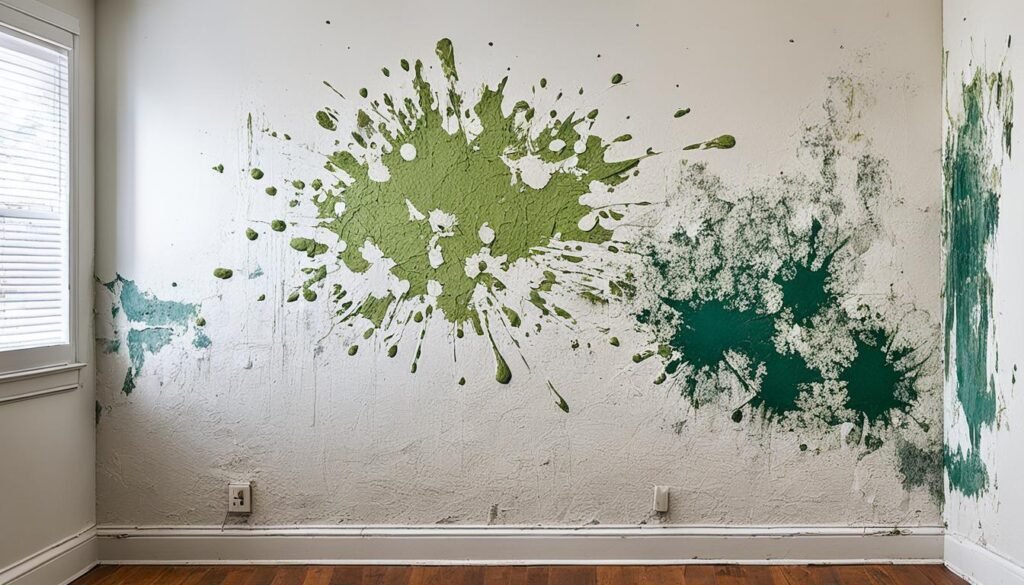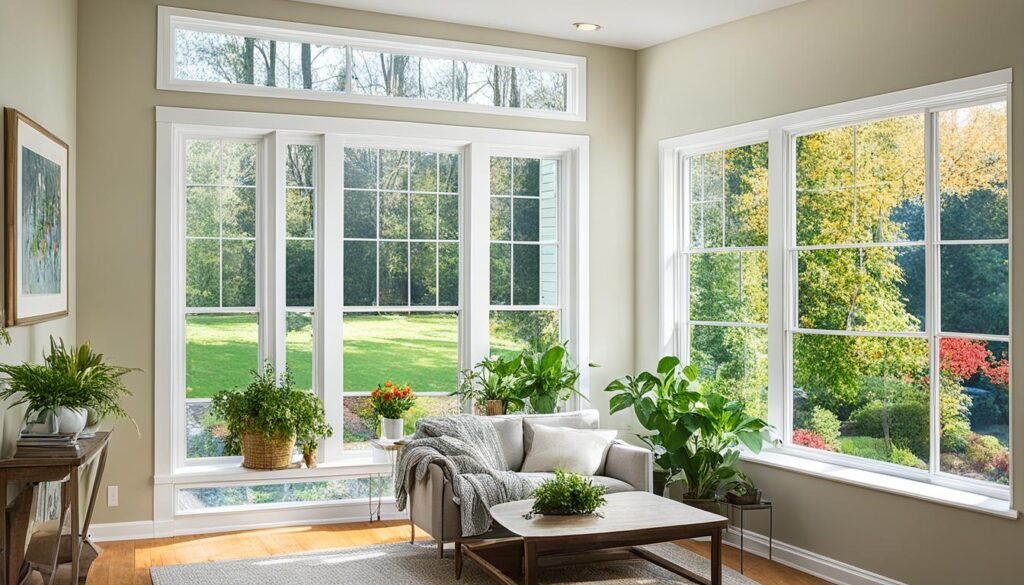Are you a UK landlord finding it hard to deal with mold and damp in your properties? You’re not the only one. Recently, a 2-year-old named Awaab Ishak sadly died because of mold. This sad event has put the spotlight on landlords’ duties to keep their tenants safe. But, what exactly do you need to do, and how can you tackle these challenges?
Key Takeaways
- Landlords in the UK must keep their properties mold and damp free to avoid health issues for tenants.
- Ignoring mold and damp can lead to severe penalties and legal problems.
- To keep problems at bay, landlords must be proactive, fix building issues, and talk openly with tenants.
- Each side, the landlord and the tenant, should ensure the living conditions are healthy, from good airflow to reporting problems quickly.
- Knowing the laws and possible actions can help landlords meet their duties and protect their tenants’ health.
Understanding Landlord Responsibilities for Mold and Damp
Landlords in the UK need to take care of mold and damp problems in their properties. The law says so in the Housing Act 2004, Environmental Protection Act 1990, and other acts. These laws make it clear that landlords must keep their places safe and free from serious hazards like damp and mold.
Landlord’s Legal Obligations
Landlords must make sure their properties are safe and habitable. They need to fix issues like damp and mold without delay. Not doing so can lead to fines, trouble with evictions, and health hazards for their tenants.
Consequences of Non-Compliance
Neglecting mold and damp issues can cause respiratory problems and other health issues for tenants. This could lead to legal actions. If a rental home has these problems, local authorities might step in to fix them.
Landlords should always look for mold and damp. They should check regularly, fix what tenants complain about fast, and take steps to stop it happening. This keeps the home safe and follows the law.
| Landlord Responsibilities | Consequences of Non-Compliance |
|---|---|
|
|
It’s crucial for landlords to know their duties and the risks of ignoring them. By doing so, they can ensure their properties are safe and healthy for their tenants.
Identifying Mold and Damp Problems
Spotting mold and damp in a UK rented home is key to fixing the problem. If tenants notice damp patches, peeling wallpaper, or condensation, they should tell their landlord. It’s important for landlords to check their properties too, to catch issues early.
Damp and mold often show up in rented homes. Mould from condensation is a big problem, growing on cold surfaces. This can make the air harmful to breathe, causing sickness or even death.
Tenants need to keep airflow and heat steady to stop condensation and damage. Landlords must keep their places safe and well-kept. Sometimes, they disagree on who pays to fix damp problems.
A new rule from the Department for Levelling Up, Housing and Communities says landlords must deal with damp. They must take quick steps to safeguard their tenants’ health.
| Mould and Damp Types | Characteristics |
|---|---|
| Surface Mould | Commonly found on window sills, walls (particularly behind furniture), bathroom ceilings (especially above showers), and rooms where laundry is left to dry. |
| Rising Damp | Affects the ground floor of a property and shows up as damp patches and ‘tide marks’ on the lower part of walls. |
| Penetrating Damp | Caused by water coming in from the outside or an internal leak. |
The UK Government’s website has new guidance on damp and mold. Tenants and landlords can learn about different types and how to solve them.
Condensation Problems
Condensation causes a lot of damp and mould in rented homes. It often happens because the house doesn’t get enough air or the insulation is poor. Landlords need to know that they are responsible for fixing the building’s problems or bad air flow that cause this, even if the tenants also play a part.
Landlords have a duty to deal with damp and mould. The law says they must fix issues like bad walls or wrong fittings that cause the damp. Unfortunately, some landlords do “revenge evictions,” kicking out tenants who ask for repairs.
Mould mainly happens because of condensation. When the moist air touch cold spots, it turns into water. Landlords must make sure their places are well-ventilated. The government gives a checklist for landlords to improve ventilation.
If damp and mould hurt your health, spoil your things, or make your home unlivable, you might get money back. You can take legal action up to 3 years later if the place is bad. In bad situations, you might get help from the council or to find a new place to stay.
Never leave a home that’s damp or mouldy without a plan to fix it. Moving out quickly can stop you from getting back your deposit or rent refunds. Landlords and tenants should team up to tackle these issues while living there.
Causes of Mold and Damp in Rental Properties
Keeping rental properties well-ventilated is key for landlords in the UK. Mold and damp can seriously affect tenants’ health and a building’s structure. Recognising the main causes helps landlords meet their uk landlord responsibilities for mould and damp issues and handle tackling mould landlord obligations.
Common Culprits
Structural issues, a lack of ventilation, and poor moisture control can cause mold and damp in rentals. Top issues include:
- Leaking roofs or gutters – Water entering from a broken roof or clogged gutters can cause damp and mold.
- Rising damp – Water from the ground getting in through foundation cracks causes ongoing dampness.
- Inadequate ventilation – Not enough air movement means moisture collects, especially in bathrooms and kitchens.
- Plumbing issues – Dripping pipes or broken appliances can add to moisture problems.
- Condensation – Cold spots from poor heating lead to condensation, supporting mold growth.
Preventive Measures
To take on the uk landlord responsibilities for mould and damp issues and tackling mould landlord obligations, being proactive helps. Here are some steps:
- Keep up with maintenance to catch and fix structural and plumbing issues early.
- Boost insulation and ventilation to manage moisture better.
- Make sure the property is sealed against water infiltration by fixing any cracks.
- Teach tenants how to control moisture, like using fans and not drying clothes inside.
- Consider using dehumidifiers or other tools for keeping indoor air healthy.
Ahead-of-the-game attitude towards tackling mould landlord obligations can keep mold and damp at bay. This protects the health of tenants and the rental’s condition.
UK Landlord Responsibilities for Mold and Damp Issues
If you’re a landlord in the UK, you must make sure your rental homes are safe. This means they should be free from dangerous things like mold and damp. Laws like the Housing Act 2004 and the Homes (Fitness for Human Habitation) Act 2018 say you should act fast if tenants report these problems. You need to find the cause and fix it to keep your tenants safe.
Rising damp is a common issue in the UK, especially when the damp course fails. It happens when water seeps up through the ground. Condensation is another big cause of damp and mold. It happens when moist air hits cold surfaces and water droplets form.
You are responsible for dealing with rising or penetrating damp that harms the property’s structure. But, if the damp is due to how tenants live, arguments can start. The Landlord and Tenant Act 1985 tells you to look after the building’s structure and fight damp caused by rising or condensation. You should make sure the houses are good for living in.
The Homes (Fitness for Human Habitation) Act 2018 is also clear about making sure properties are healthy to live in. It points out that health threats like damp and mold must be fixed quickly. If not, there can be legal problems.
| Landlord Responsibilities | Tenant Responsibilities |
|---|---|
|
|
Keeping your property well-maintained and well-ventilated is key to preventing mold and damp. If you suspect a problem, get help from experts who know about damp and mold. Groups like HEVAC or the Property Care Association can give you good advice.
Don’t forget: it’s your job as a landlord to tackle damp and mold issues quickly and properly. By doing so, you not only comply with the law but also ensure your tenants live in a safe home. This helps protect your property’s value too.
Addressing Mold and Damp Complaints
Tenants often report mould or damp problems. Landlords need to act fast and be caring. They should explain how they will fix these issues and when the work will be done.
Tenant Communication
It’s crucial for landlords to keep in touch with tenants about such complaints. They should:
- Acknowledge the problem and promise to deal with it quickly.
- Let the tenant know when the inspection and repair work will happen.
- Update the tenant on the progress regularly.
- Explain what the tenant can do to help stop mould and damp problems.
Inspection and Assessment
When a tenant reports mould or damp, the landlord must check the property. They look closely to find where the problem is really coming from. Here’s what they should do:
- Check every part of the affected area to see how bad it is.
- Take notes and pictures to better understand and fix the issue.
- Ask for help from experts like surveyors or damp specialists if needed.
- Find out what is causing the mould or damp, like bad structure or poor ventilation, to find the best fix.
| Statistic | Value |
|---|---|
| Percentage of homes in England with mould problems in 2021 that were private sector rental properties | 11% |
| Areas most affected by mould | Windows (65%), walls (61%), and ceilings (43%) |
| Percentage of rented properties that fail to meet the Decent Homes Standard | 14% (3.4 million) |
By looking closely at the issue, landlords can find the real cause of mould and damp. This helps them make a good plan to fix it. Their main goal is to keep their tenants safe and happy.

Remediation and Repair Strategies
Landlords facing mould and damp issues in their properties must choose a way to fix it. They can either try to solve the problem themselves or hire professionals. The best option depends on how bad the problem is and what caused it.
DIY vs. Professional Services
If the mould or damp is just in one small spot, landlords could fix it themselves. They can clean the area with a special mould-killer, make sure the room is well-aired, and fix small problems in the building. But, if the issue is big or affects many parts of the property, it’s smarter to get help from professionals. They can find the real cause, figure out what to do, and fix it properly.
Specialised companies that deal with mould and damp issues follow a detailed process:
- Containment of the affected area to prevent the spread of mould spores
- Thorough removal of all visible mould growth
- Cleaning and drying out of damp areas
- Repair work to address any structural defects contributing to the problem
- Post-remedial testing to ensure complete eradication of the mould
For tough and widespread problems, hiring professionals is key. Their knowledge and tools help to cut down the root causes of mould and damp. This not only meets the landlord’s duty but also keeps the tenants safe and happy.
Long-Term Prevention and Maintenance
Stopping mould and damp from coming back in rental homes needs careful, regular work from landlords. They should work to better the property’s state and how energy efficient it is. They should focus on making sure the building has good air flow and is well insulated.
Ventilation and Insulation
Good air flow helps fight mould and damp. Landlords need to make sure properties get enough fresh air. This can be done by opening windows, fitting extractor fans, or using whole-house ventilation. It stops moisture from building up, which cuts down on mould.
Improving the property’s insulation is key to keeping mould and damp away long term. Making the building more energy efficient, by upgrading windows or adding insulation to walls and lofts, helps keep it warm. This reduces the chances of having moisture problems.
Checking the property often and fixing issues early is also important. Landlords should quickly deal with leaks, cracks, or bad drainage. These problems can cause mould and damp if not taken care of.
With these steps, landlords can lower the chance of their tenants facing mould and damp issues. This way, their tenants can have a safe and comfy place to live in.

Tenant’s Role in Mold and Damp Management
Dealing with mould and damp in rental properties is mainly the landlord’s responsibility. But, tenants also have a key part to play. As a tenant, you have specific rights and duties regarding mould and damp issues. It’s essential you know what these are.
First off, it’s vital to report mould or damp signs quickly to your landlord. This could be spotting mould, a lot of condensation, or a musty smell. Telling your landlord early helps them find and fix the problem before it gets worse.
After reporting, you should also help with any actions taken to solve the issue. This might mean letting them in for checks, hosting repairs, or doing things to cut down on moisture. Following these steps helps keep the property in good shape.
To avoid mould and damp, do your bit by keeping things well-ventilated and moisture-free at home. Using fans, opening windows, and avoiding activities that make a lot of moisture can make a huge difference. These simple habits can help keep the air in your home fresh and dry.
If you have health problems made worse by a damp home, talk to a doctor. Getting advice and medical notes can make your concerns with the landlord stronger. This could help you if you need to take legal action to solve the issue.
By working with your landlord and being proactive, you can keep your rental place safe from mould and damp. This protects you, your health, and your rights as a tenant.
| Tenant Responsibilities | Landlord Responsibilities |
|---|---|
|
|
Tenants and landlords can tackle mould and damp issues together, keeping everyone safe in their homes.
Conclusion
Mould and damp are serious problems in rented homes. They can make tenants very unwell if not dealt with quickly. If you’re a landlord in the UK, it’s your legal duty to keep your properties safe and liveable.
Knowing why mould and damp happen helps. By spotting and fixing these issues early, and working with your tenants, you meet your commitments. Not doing so may bring heavy fines, legal fights, and hurt your reputation.
Tenants deserve a home that’s safe to live in. You should act fast to fix any mould or damp. By being proactive and working together, you look after your tenants, their health, and your property’s value.




